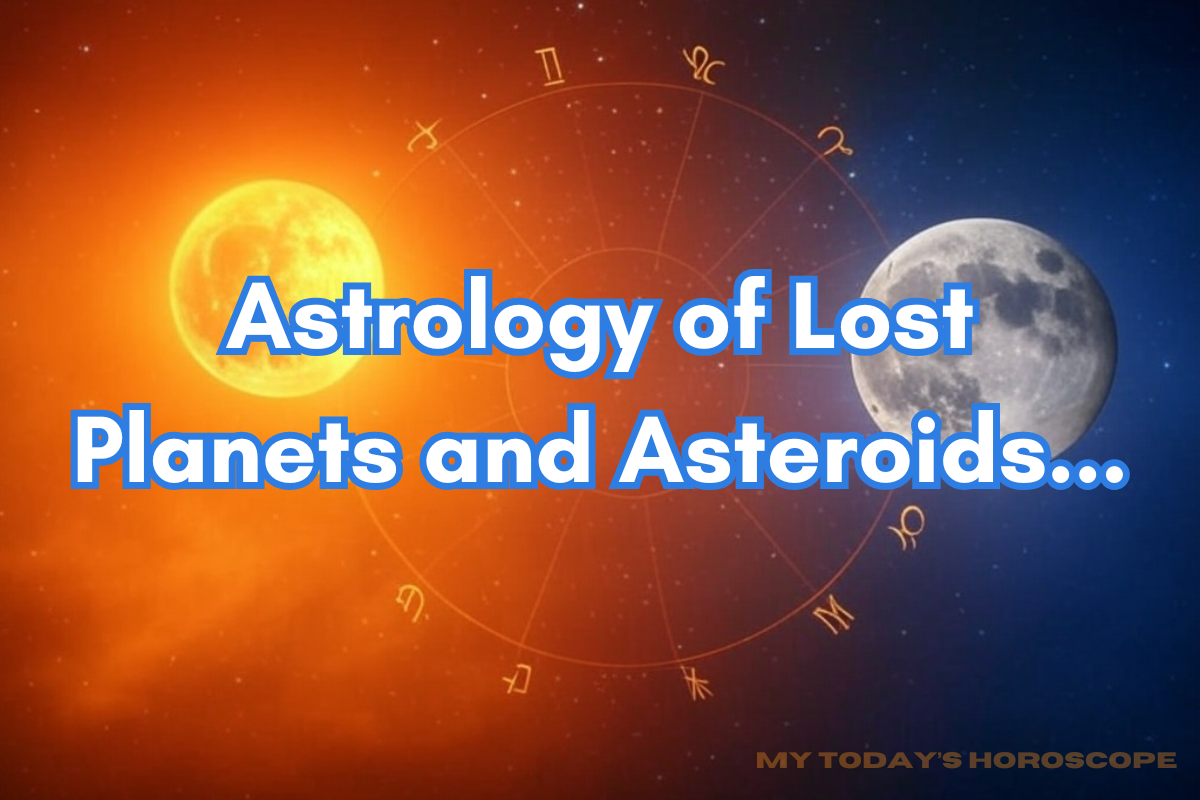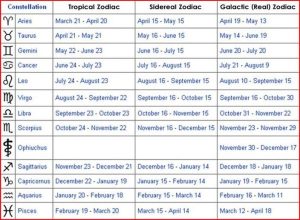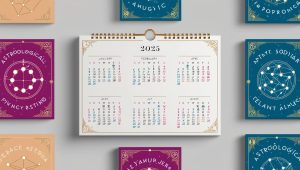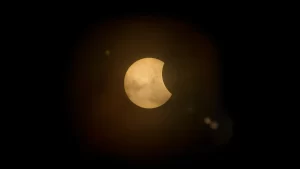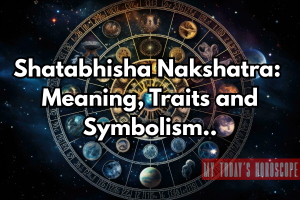Astrology, an ancient practice that interprets the influence of celestial bodies on human affairs, has long been a source of fascination and debate. While the traditional zodiac signs and planets like Mercury, Venus, and Mars are well-known, there exists a lesser-explored realm within astrology: lost planets and asteroids. These celestial entities—some hypothetical, others real but often overlooked—offer a deeper layer of insight into the complexities of personality, destiny, and cosmic influence. In this extensive article, we will journey through the history, significance, and astrological interpretations of these mysterious bodies, uncovering how they shape modern astrological practice. From the mythical allure of lost planets to the tangible impact of asteroids, this guide provides a thorough understanding of their role in the astrological cosmos to deliver a comprehensive exploration.
Introduction: Unveiling the Hidden Celestial Bodies
In astrology, the term “lost planets” refers to hypothetical planets—celestial bodies that are not physically observed but are believed to exert influence based on astrological theory. These include entities like Vulcan, a planet once thought to orbit between Mercury and the Sun, and Lilith, often referred to as the “Dark Moon.” On the other hand, asteroids are real, observable objects—small, rocky bodies orbiting the Sun, primarily between Mars and Jupiter. While asteroids like Ceres, Pallas, Juno, and Vesta have gained prominence in astrological interpretations, their influence was largely ignored until the 20th century.
The inclusion of lost planets and asteroids in astrology expands the traditional natal chart, offering nuanced insights into specific areas of life, such as relationships, personal growth, and hidden desires. For astrologers, these bodies act as cosmic keys, unlocking deeper layers of meaning and providing a more comprehensive view of an individual’s psyche and destiny. As we explore their roles, we’ll see how these celestial entities enrich astrological practice, bridging the gap between the known and the mysterious.
Historical Background: From Ancient Stars to Modern Discoveries
The Evolution of Astrology
Astrology’s roots stretch back to ancient Mesopotamia, where early stargazers mapped the heavens and linked planetary movements to earthly events. Over millennia, this practice evolved, with Greek, Roman, and later European astrologers refining the system to include the familiar 12 zodiac signs and the seven classical planets (Sun, Moon, Mercury, Venus, Mars, Jupiter, Saturn). However, as astronomical discoveries expanded our understanding of the solar system, astrology adapted, incorporating newly discovered planets like Uranus (1781), Neptune (1846), and Pluto (1930).
The Emergence of Asteroids
The discovery of asteroids began in 1801 with Ceres, initially classified as a planet before being reclassified as an asteroid. This opened the door to a new frontier in astrology. By the mid-20th century, astrologers like Eleanor Bach and Demetra George began exploring asteroids’ influence, particularly their connection to feminine archetypes and personal development. Today, asteroids are integral to many astrologers’ toolkits, offering a richer, more textured approach to chart interpretation.
Hypothetical Planets: A Mystical Addition
Lost planets, or hypothetical planets, emerged from a blend of astrological theory and speculative astronomy. Figures like Alfred Witte and Theodor Landscheidt proposed the existence of planets like Transpluto and Vulcan, based on perceived gaps in astrological influence. While these planets remain unproven, their symbolic power persists, with astrologers using them to explain subtle, often unconscious aspects of human behavior.
Lost Planets: The Hypothetical Guardians of the Zodiac
What Are Lost Planets?
Lost planets are theoretical celestial bodies that astrologers believe influence human life, despite lacking physical confirmation. They are often invoked to explain psychological or spiritual phenomena that traditional planets cannot fully account for. These planets are typically placed in specific zodiac degrees or calculated using complex ephemerides, adding an esoteric layer to astrological practice.
Key Lost Planets and Their Significance
- Vulcan: Once hypothesized to orbit between Mercury and the Sun, Vulcan is associated with intense, transformative energy. In astrology, it symbolizes inner strength, willpower, and the forging of identity through adversity.
- Lilith (Black Moon Lilith): Lilith represents the shadow self, rebellion, and untamed feminine energy. Often linked to themes of independence and repressed desires, Lilith’s placement in a chart highlights areas of life where one may feel marginalized or empowered.
- Transpluto (Isis): A hypothetical planet beyond Pluto, Transpluto is tied to themes of rebirth, healing, and the integration of fragmented parts of the self. It is often used in charts to explore deep psychological transformation.
Astrological Interpretations
Lost planets are typically used to explore hidden or unconscious aspects of the psyche. For example:
- Vulcan in Aries might indicate a fierce drive to assert one’s identity, often through challenges.
- Lilith in the 7th House could suggest struggles with intimacy or a rejection of traditional relationship norms.
- Transpluto in Scorpio might point to a powerful capacity for healing through emotional depth and transformation.
While their influence is subtle, lost planets offer a unique lens for understanding the deeper, often unspoken forces shaping our lives.
Asteroids: The Cosmic Messengers of Personal Growth
What Are Asteroids in Astrology?
Asteroids are small, rocky bodies that orbit the Sun, with the majority located in the asteroid belt between Mars and Jupiter. In astrology, they are seen as micro-influencers, each carrying specific mythological and archetypal meanings that add depth to chart interpretations. Unlike planets, which govern broad life themes, asteroids pinpoint more precise areas, such as love, wisdom, or nurturing.
Major Asteroids and Their Meanings
- Ceres: The largest asteroid, Ceres represents nurturing, motherhood, and the cycles of growth and loss. Its placement in a chart highlights how one gives and receives care.
- Pallas (Athena): Named after the goddess of wisdom and strategy, Pallas governs intellect, creative problem-solving, and justice. It often indicates how one approaches challenges or advocates for others.
- Juno: The asteroid of commitment and partnership, Juno reflects one’s approach to relationships, marriage, and loyalty. It can reveal patterns in how one seeks or maintains balance in unions.
- Vesta: Associated with devotion and sacred service, Vesta highlights where one finds spiritual fulfillment or dedicates themselves to a higher cause.
Astrological Interpretations
Asteroids are often used to explore specific life themes or challenges. For example:
- Ceres in Taurus might indicate a nurturing style rooted in physical comfort and stability.
- Pallas in Gemini could suggest a talent for strategic communication or intellectual debate.
- Juno in Libra often points to a desire for equality and harmony in partnerships.
- Vesta in the 12th House might reflect a deep commitment to spiritual or healing practices.
By weaving asteroids into chart readings, astrologers can offer more personalized and nuanced guidance, especially in areas like relationships, career, and personal growth.
Integrating Lost Planets and Asteroids into Astrological Practice
Calculating Positions
While lost planets are hypothetical, their positions are calculated using specific astrological techniques or ephemerides developed by proponents like Alfred Witte. Asteroids, being real celestial bodies, have precise positions that can be tracked using astronomical data. Most astrology software and online platforms now include options to add asteroids and hypothetical planets to natal charts, making their integration accessible.
Interpreting Aspects and Placements
Astrologers typically analyze lost planets and asteroids through their house placements, signs, and aspects to other planets. For instance:
- Lilith conjunct Venus might indicate a struggle with self-worth in relationships or a rejection of societal beauty standards.
- Ceres square Mars could suggest tension between nurturing instincts and assertive actions, perhaps leading to conflicts in caregiving roles.
These placements offer additional layers of meaning, enriching the traditional chart reading.
Transits and Progressions
Lost planets and asteroids can also be tracked through transits and progressions, revealing periods of growth or challenge. For example:
- Transiting Juno over the natal Sun might signal a time of deepened commitment or relationship focus.
- Progressed Vesta entering the 10th House could indicate a phase of career dedication or public service.
These movements provide astrologers with tools to forecast life events or inner shifts with greater precision.
Case Studies: Lost Planets and Asteroids in Action
Historical Figures and Events
- Albert Einstein (March 14, 1879): Einstein’s chart features Pallas in Aquarius, reflecting his revolutionary intellect and strategic approach to science. His Lilith in the 3rd House suggests a rebellious communication style, challenging established norms.
- Frida Kahlo (July 6, 1907): Kahlo’s Ceres in Taurus highlights her deep connection to physical expression and nurturing through art. Her Vesta in the 8th House points to a life dedicated to exploring themes of transformation and rebirth.
Notable Correlations
- The 1969 Moon Landing: The asteroid Apollo (named after the god of prophecy) was prominently placed during this event, symbolizing humanity’s leap into the unknown.
- The Women’s Suffrage Movement: Juno’s transit through Libra during key suffrage milestones underscored the fight for partnership equality and justice.
These examples illustrate how lost planets and asteroids can provide additional context to historical moments and individual lives.
Criticisms and Controversies: The Debate Over Hypothetical Bodies
Scientific Skepticism
From a scientific perspective, lost planets like Vulcan or Transpluto lack empirical evidence, leading many to dismiss their astrological use as speculative or unfounded. Asteroids, while physically real, are often criticized for their minor influence compared to planets, with skeptics arguing that their effects are too subtle to be meaningful.
Astrological Debate
Within the astrological community, opinions vary. Some practitioners view lost planets and asteroids as essential tools for nuanced readings, while others see them as unnecessary clutter. Critics argue that their inclusion can lead to over-interpretation, diluting the clarity of traditional planetary influences.
Balancing Perspectives
Despite these debates, many astrologers find value in the symbolic resonance of these bodies, using them to explore specific themes or psychological depths. As with all astrological tools, their effectiveness often depends on the practitioner’s skill and the client’s openness to metaphorical interpretation.
The Future of Astrology: Expanding Horizons with Lost Planets and Asteroids
Technological Advancements
As astronomical discoveries continue—such as the identification of new asteroids or dwarf planets—astrology will likely evolve to incorporate these findings. Software advancements already allow for the inclusion of hundreds of asteroids in charts, and future tools may offer even more precise calculations for hypothetical bodies.
Psychological and Spiritual Growth
The inclusion of lost planets and asteroids reflects astrology’s shift toward psychological and spiritual exploration. As more people seek personalized, introspective guidance, these celestial bodies may become increasingly relevant, offering tailored insights into niche areas of life.
Potential Discoveries
Hypothetical planets, while unproven, may inspire future astronomical searches. For instance, the search for Planet Nine—a theoretical planet beyond Neptune—echoes astrology’s speculative tradition. Should such a planet be discovered, it could bridge the gap between science and astrology, validating the symbolic power of lost planets.
Conclusion: The Cosmic Tapestry of Lost Planets and Asteroids
The astrology of lost planets and asteroids invites us to look beyond the visible, exploring the hidden forces that shape our lives. While their influence may be subtle or speculative, these celestial bodies enrich the astrological narrative, offering a deeper, more textured understanding of the self and the cosmos. From the transformative power of Vulcan to the nurturing embrace of Ceres, these entities act as cosmic messengers, guiding us toward growth, healing, and self-discovery. As astrology continues to evolve, the study of lost planets and asteroids will likely remain a vital thread in the ever-expanding tapestry of the stars, reminding us that the universe’s mysteries are as boundless as our capacity to explore them.
